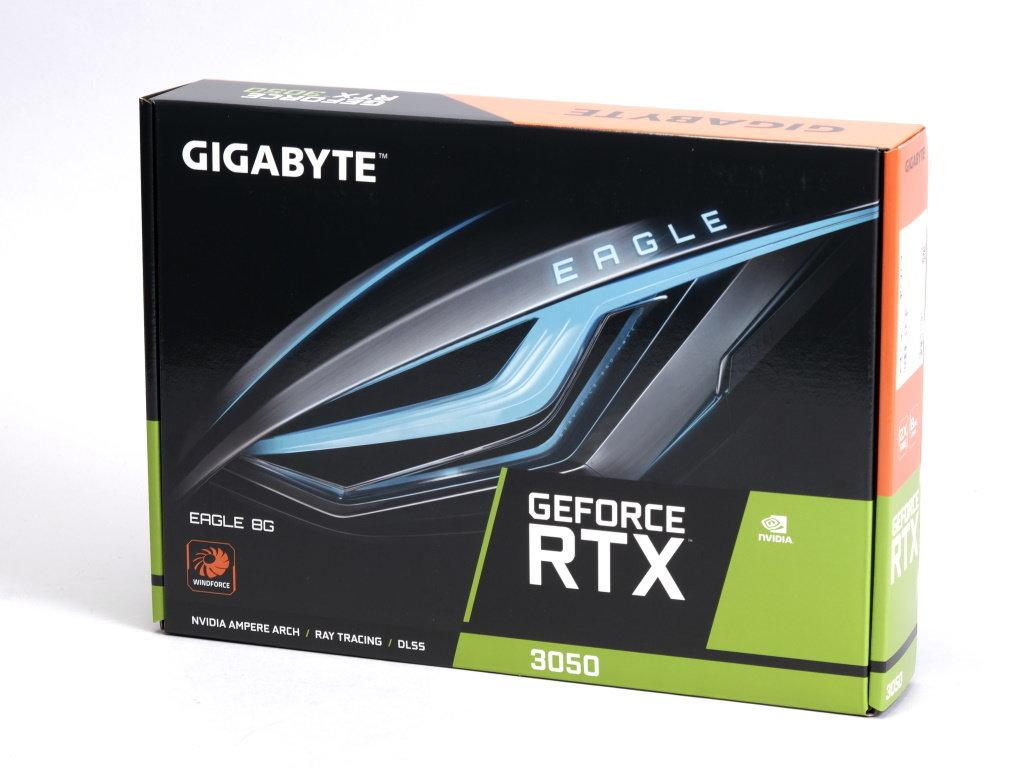What happens if you put the Gravo with "GeForce RTX 3050" on the gaming PC about four and a half years ago at 23:00 on January 27?
"GeForce RTX 3050 EAGLE OC 8G" made by Gigabyte

NVIDIA announced on January 26 that it will start selling graphics cards equipped with a GEFORCE RTX 3050 for desktop PCs from 23:00 on January 27. The actual price of graphics cards provided through partner companies is expected to start from $ 249 (about 28,300 yen) in the United States and less than 40,000 yen including tax in Japan. [Image] The real -time ray tracing (RT) performance GeForce RTX 3050 is a new entry model of the "GeForce RTX 30 Series" that uses an amperer architecture. The company has prepared it as an upgrade path from the "GeForce GTX 1060" and "GeForce GTX 1650", which still has a high share in gaming. Many reviews of the new GPU (graphics card) are performed using the latest PC. However, some people may want to know what will happen if you replace it with a PC graphics card you are using now. Therefore, this time, a gaming desktop PC made by the manufacturer released about four and a half years ago (August 2017) is equipped with a Gigabyte graphics card "GeForce RTX 3050 EAGLE OC 8G", and GeForce RTX 3050 through the benchmark test. Check the performance of. Let's carefully check whether it is an ant or a pear to "power up an old gaming desktop PC by replacing the graphics card".
What kind of GPU is "GeForce RTX 3050" in the first place?
In recent years, the specifications of GPUs required by game titles tend to be increasing. In order to replace the mainstream graphics card released from 2016 to 2017, not only NVIDIA but also competition AMD has also introduced an entry -class GPU using new architecture. The new GeForce RTX 3050, which is newly launched by NVIDIA, belongs to the GeForce RTX 30 Series. It is an entry class as a GPU for desktop PCs that adopt an AMPERE architecture, but it also supports RT (real -time ray tracing) processing only because it claims RTX. The specific specifications are as follows.・ Manufacturing process: 8nm ・ CUDA core: 2560 ・ TENSOR core: 80 (3rd generation) ・ RT core: 20 (2nd generation) ・ Streaming multi -processor: 20 units ・ operation clock: 1552MHz (base) ~ 1777MHz (Boost) ・ Graphics memory: 8GB (GDDR6) ・ Memory bass width: 128bit, memory bandwidth: 224GB per second ・ Connection interface: PCI Express 4.0/3.0 X16 ・ Power consumption: 130W (power supply is recommended for 550W) GPU die itself is the same “GA106” as the “GeForce RTX 3060”, which is a direct model, but CUDA core and graphics memory have been reduced.The bus width of the memory is also narrowed from 192 bits to 128 bits.The question is that the specifications are even lower than before, but is it OK? However, in the benchmark test that NVIDIA conducted in -house, the main games were average frames than GeForce GTX 1050 (TI) and GeForce GTX 1650.The rate is improving.The company says, "It's just right to step up to RTX."However, in the NVIDIA test, PCI Express 4.I use a relatively new PC corresponding to 0.PCI Express 3.What happens if you use the GeForce RTX 3050 for the replacement of a slightly old PC graphics card that corresponds to 0?